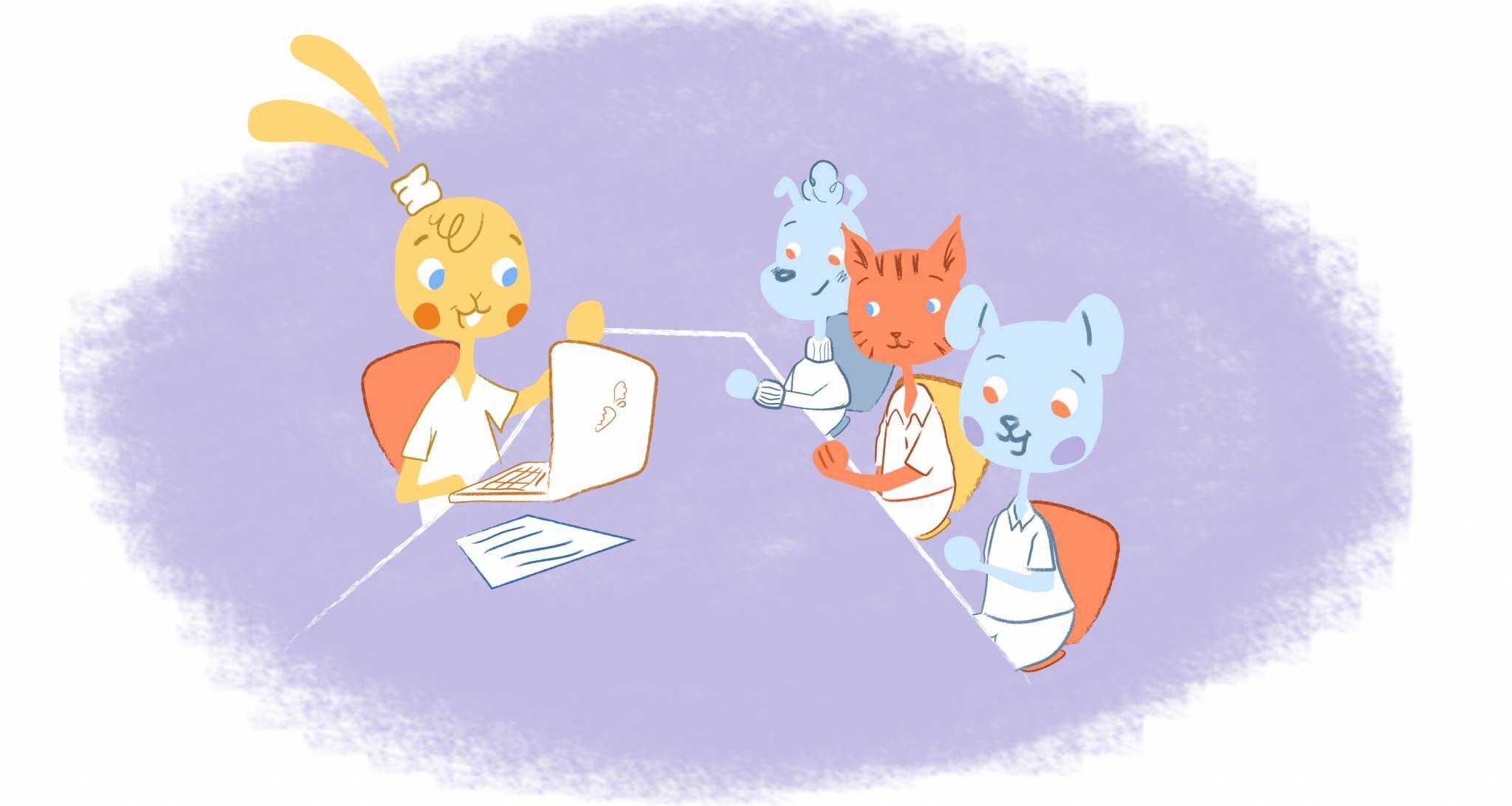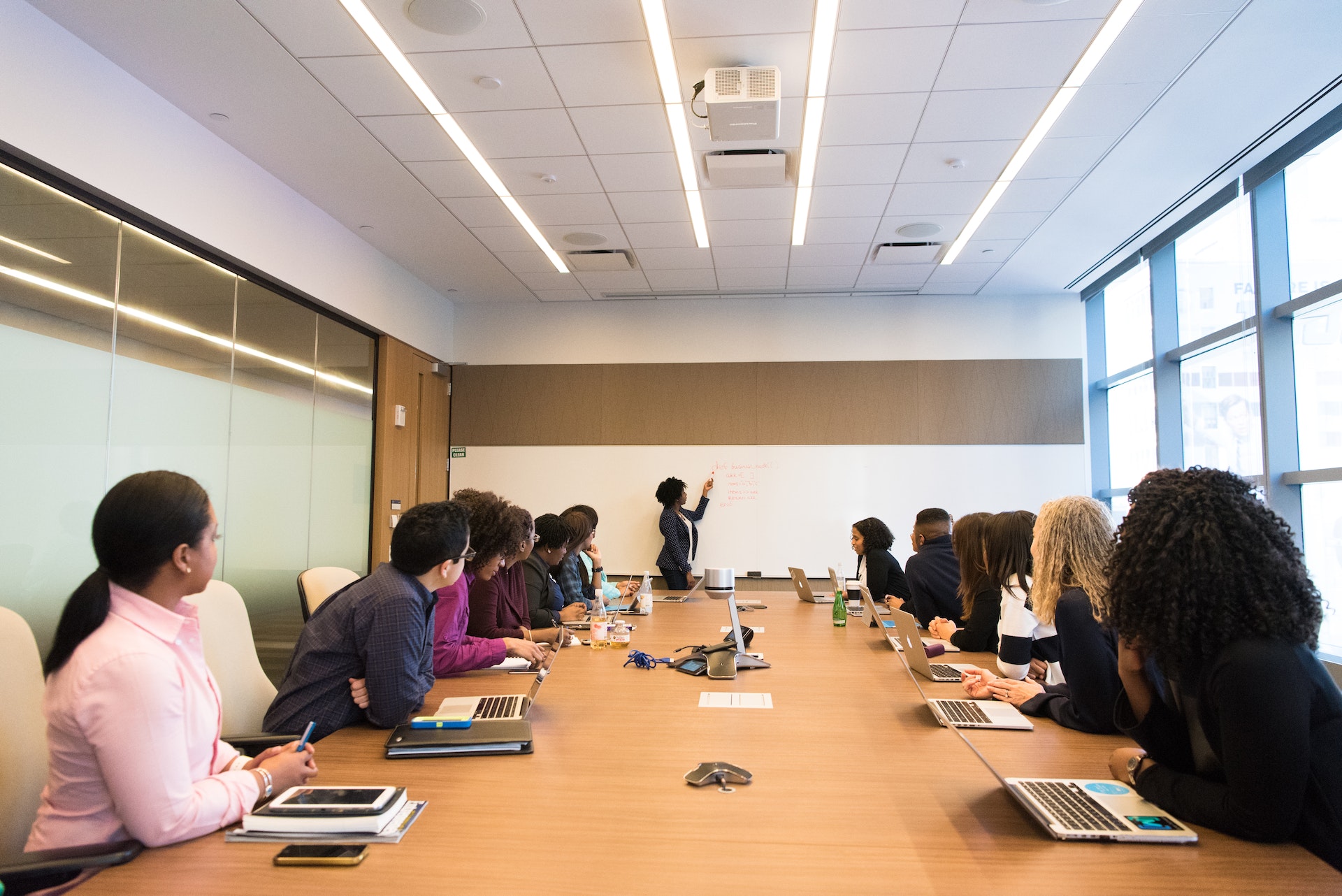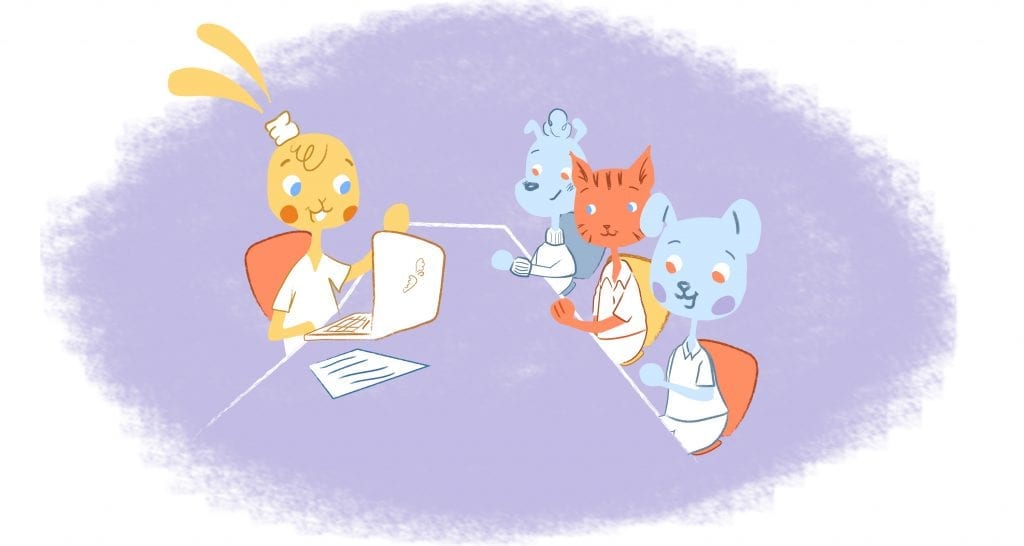

There’s no way around it. If you own a business, then you’re in sales. Of course, that can be a bit tricky for entrepreneurs. After all, aren’t we supposed to be visionaries and not pushy salespeople?
The fact is, as an entrepreneur, you are a salesperson. And, as any seasoned salesperson will inform you, that means building relationships before making a sale. Additionally, you also have to connect with not only your customers, but also vendors, investors, employees, and other entrepreneurs.
Personally, I’ve found that one of the best ways to strengthen these relationships — both internally and externally — is through meetings. In fact, my calendar is booked solid with meetings. And, that’s actually a good thing. It’s through these meetings that conversations occur.
Conversations may not seem like a big deal. But, conversations are a part of social interaction that can improve your cognitive functions, provide support, and allow you to better understand what others want. All of these are perks for entrepreneurs.
However, to actually have a meaningful conversation you first need to know how to schedule, prepare, and run an effective meeting. The good news? There are plenty of ways to use psychology to master the art of meetings.
Book More Meetings Using These Jedi Mind Tricks
Before you can even think about preparing for a meeting, you first need to book one. And, no, just asking someone if they have half an hour tomorrow doesn’t fly. Instead, try out these two simple psychology tricks.
The Foot in the Door Technique
Want to get people to say more often? Start by asking them for something small. If they comply, they’ll be more likely to say “yes” when you ask them for a larger request.
This technique was actually studied by Jonathan Freedman and Scott Fraser of Stanford University back in 1966. Here’s what happened, via Neil Patel on Forbes;
They began with the question, “How can a person be induced to do something he would rather not do?” Next, they explained their experiments. First, they asked a group of people for a small request by telephone, and later asked them for a larger request in person.
The small request made by telephone was for subjects to report on what type of household cleaning products they used. The second and bigger request was for subjects to allow a researcher into their home to examine their household products brands and usage.
When compared with the control group, who was merely asked for an in-home product analysis, subject who had first responded positively to the first request were 135 percent more likely to respond positively to the second request.
So the next time you want to book a meeting, start by asking for small favor like asking for the other person’s thoughts, advice, or where you can obtain more information on a specific topic.
Explain Your Purpose
Whenever you ask someone to have a conversation, make sure there’s a purpose. After all, you don’t want to waste their valuable time.
In other words, tell the other party why you’d like to meet with them.
According to Harvard University psychologist Ellen Langer people were 34 percent more likely to let a stranger cut in line when the stranger explained why they were in a hurry. For example, “Excuse me, I have five pages. May I use the Xerox machine because I’m in a rush?”
Simple. But, it works.
Choose Your Time and Location Wisely
Now that you’ve got a meeting booked, you need to put some thought into where and when the meeting will take place.
First, you need to pick a spot that’s both interesting and stimulating, such as:
- A room with a window and a view of the outside. If there isn’t a window, at least in a room where there are plants or an interesting piece of art. This boosts cognitive performance.
- If the weather permits, go for a “walking meeting” instead of sitting inside. This can stimulate high level cognitive processes and creative thinking. This can also build a sense of trust and cooperation among people.
- A trendy spot, like your favorite local coffee shop. This breaks up the monotony and doesn’t make the meeting seem as stuffy.
- Doodle and ScheduleOnce are a pretty good options to schedule out things.
Ultimately, you can settle on whatever interesting location you believe will be appropriate. The point is that when you pick an exciting and interesting environment, the meeting will feel the same.
As for when to schedule your meeting, that also depends. For introductory meetings, a 10-minute call in the afternoon should suffice. In fact, researchers have found that the best time for meetings are in the afternoon meetings, 3 p.m. to be exact.
If you’re scheduling a follow-up meeting, block out time for a 30-minute call or an hour and a half lunch meeting if they’re interested.
At the same time, you want to be flexible. That’s when you can use a tool like Calendar. You can share your availability via email or a link with others. They then pick the best date and time to have the meeting.
And, because Calendar uses the power of machine learning, it will also suggest where and how your meeting should take place. Pretty cool, right?
Put the Confirmation on Lockdown
Alright. You’ve got the date, time, and location picked. Now it’s time to remind this information with the invitees at least 24 hours in advance. This way you know for certain that they’ll be attending — along with being reminded of the meeting’s purpose.
While everyone invited should receive an email notivaton at least, it wouldn’t hurt to pick-up the phone and give them a quick call. I wouldn’t do this when it’s a team meeting. But, if it’s a one-on-one meeting with a high-profile client, this shows you’re committed. It also gives you a chance to recap, reclose, and remind them what the meeting is going to be about.
If you really want to add a unique personal touch, send them a brief video message thanking them in advance for attending and again giving them a rundown on what to except.
Finally, when you do have them on the phone, don’t want to send them a calendar invite. Send it to them while talking with them so that they’ll accept the invite while it’s on their mind. It also kinds puts them on the spot.
Laying the Groundwork to Master The Art of Meetings
You’ve made it this for, so the last thing you want to do is fumble on the one-yard line. That’s why you need to prepare for your meeting by:
Doing Your Homework
“If you’re having a team meeting this doesn’t necessarily apply. If you’re meeting with a prospective client or investor you should definitely pay attention to this one. When you book your meeting you probably know the very basic details about each person in attendance” suggests Renzo Costarella in a previous Calendar article.
“Before each meeting you should spend an ample amount of time researching your attendees. Google their business and read some of the latest industry news. Head over to Twitter or LinkedIn to touch up on their most recent achievements or thoughts. This way you’ll save time during introductions and even have some material prepared to make a great first impression.”
Making Sure There’s Structure
“Meetings fall apart when they don’t have structure to them,” says Richard Chambers, a doctoral candidate in industrial-organizational psychology at Louisiana Tech University who leads projects for AROS Consulting, a university-based consulting organization.
Go back to your “why” so that you can set an agenda for the meeting. This way invitees will know exactly what the purpose of the meeting will be. It also allows you to allocate enough time for each point you need to make so that you can stick to an allotted time.
It also wouldn’t hurt to email the attendees the agenda and relevant documents for the meeting in advance. Please don’t do this the night before. They’ll need more time then that to review them.
Being the First to Arrive
When you rush through the door 15-minutes late, what kind of impression are your giving the other attendees? It shows that you believe that you time is more valuable then there’s. In other words, it undermines the whole purpose of the meeting.
Furthermore, Steven Rogelberg, PhD and Joseph Allen, PhD found that when a person showed up less than five minutes late for a meeting, productivity didn’t suffer. However when an attendee or leader showed up five to 10 minutes late, “satisfaction, effectiveness and productivity of the meeting dropped dramatically.”
Play it safe and plan to arrive early so that you prevent this from happening. As an added perk, you can use this extra time to give over the agenda, notes, and make sure any tech you’re using is working. Or, you can use this time to clear your head and mediate.
Practicing Self-Talk
“Each of us has a set of messages that play over and over in our minds. This internal dialogue, or personal commentary, frames our reactions to life and its circumstances. One of the ways to recognize, promote, and sustain optimism, hope, and joy is to intentionally fill our thoughts with positive self-talk,” writes Gregory L. Jantz, Ph.D., for Psychology Today.
That’s a pretty powerful tool when getting ready to walk into a meeting since it will help you “put your best foot forward.”
So, take a couple of minutes the morning before the meeting, or even those couple of minutes before it starts, and jot down the time you crushed a previous meeting. Reflect about everything you’ve accomplished. Think about what makes you unique and awesome. And, revisit your “why” since it reminds you, well, why you’re doing this in the first place.
Self-talk puts you in a positive mindset that you’ll carry over into the meeting. And, studies have found that people were given a one-liner of self-talk, others found them to be more likeable and and engaging.
Dressing to Impress
Researchers from California State University Northridge and Columbia University have found that dressing more formally doesn’t just make you look sharp. It can help you better deal with criticism and feel more in control.
“Putting on formal clothes makes us feel powerful, and that changes the basic way we see the world,” says Abraham Rutchick, an author of the study and a professor of psychology at California State University, Northridge.
While you don’t always have to dress formally during a weekly team meeting, it’s always a smart move to dress up when meeting a client, vendor, or investor for the first time.
Launch a Kickoff Event
Not literally, of course. But, remember, the purpose of kickoff event is to call attention to the upcoming program and build enthusiasm for it.
So, yeah. You should definitely have a little pregame for your meeting.
I know it’s not always the best, but you can begin by having a little small talk. Small talk has the ability to build rapport and trust. The key is to be more creative then the, “How about this crazy weather?” banter.
Here’s a couple of ideas to get started:
- If it’s a group meeting, then have your team go around and share recent success stories.
- If it’s an external meeting, like with a prospective client or investor, focus on a major accomplishment they just experienced. For example, if you saw on LinkedIn they just got promoted, discuss that.
The point here is that if you start the meeting with some good vibes, than those will carry over to the outcome. That’s because everyone has primed their brains to be in a more favorable state. This is what psychologist Barbara Frederickson calls broad-and-build.
Running a Constructive and Productive Meeting
With the actual meeting underway, you want to ensure that it not only stays on track by sticking to agenda. You also want to make sure that it’s constructive and productive by;
- Keeping the meeting moving. Stephen Fabick, EdD, a clinical and consulting psychologist and business coach in Birmingham, Michigan, says, “You want to set a tone of inclusiveness and diversity of opinion but also efficiency.” If running a team meeting, set time minutes for each discussion. If meeting externally, steer the other party back to the purpose of the meeting.
- Seeking advice. As described in Give and Take: Why Helping Others Drives Our Success by Adam Grant, asking for advice will help give you influence and esteem in conversations. Harvard research also shows that individuals perceive those who seek out advice are more competent and influential than those who don’t.
- Giving honest and sincere compliments. Since you did your homework, you can compliment the other party about their accomplishments. Just make sure that you’re sending the right body language cues as well. But, only do this one-on-one. Paying compliments in a group setting can lead to attitudes of envy and jealousy.
- Being constructive. Sometimes meetings can get a little heated. Instead of getting defensive or cutting people off, keep it constructive. Brenda Fellows, PhD, of the Haas School of Business, University of California suggests something like, “I agree with some of what you’re saying” instead of a short-tempered, “I just don’t agree with you.
- Usin technology wisely. You can collaborate with others in real-time using Google Docs, for example. But, checking your email or social media accounts? That’s disrespectful to the other attendees.
- Asking a question. As the meeting winds down, you’ll want to once again engage in some small talk. Ask them about their hobbies, interests, or favorite book. Just make sure that this is a natural part of the conversation and not out of nowhere. This is a guaranteed way to make you seem more likeable, trustworthy, and engaging.
Tap into the Power of the Follow-Up
The meeting might have been a success. But, you don’t done just yet. You need to follow-up with the other invitees.
Internally, this would be sending your employees a summary of the meeting and which actions each member must take next. Externally, you could do the same. But, you’ll have to go a little further.
If you just closed a sale, call the customer and personally thank them that day. It assures them that they made the right decision. You could also send them a handwritten thank you note with an update on when they can expect their product or service.
This is a lot to take-in, but it gets easier the more you practice.











Nina Gass
Nina Gass is a content writer with a diverse background who understands the struggles of small business owners, freelancers, and company founders. Her content delivers insightful and actionable advice to improve time management, productivity, and sanity despite wearing numerous hats and juggling multiple responsibilities in work and life.